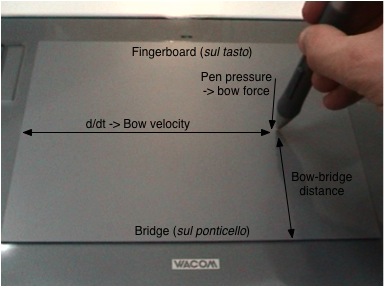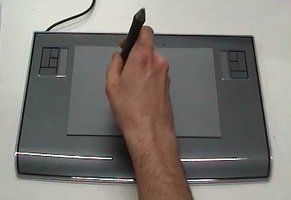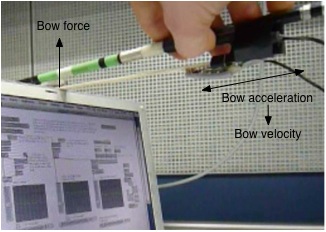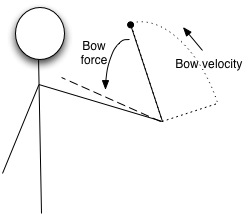Matthias Demoucron
Doctorant, Sound synthesis of bowed string instruments- Tel : 01 44 78 14 86
- Email :

These pages present some material related to my PhD work. You will find sounds, videos and illustrations that could not be included in the paper version. Feedbacks, remarks, suggestions, constructive critics and intellectual supports are welcome...
- Introduction
- PhD thesis: On the control of virtual violins - Physical modeling and control of bowed string instruments
- Measurements of bowing parameters in real performance
- Sound examples: control with real measurements and synthesized gestures
- Control interfaces: real time control with physical interfaces
The control of the model requires the dynamical description of at least two parameters: bow velocity and bow force. Additionaly, the position of the bow on the string (bow-bridge distance) can be controlled as well. The following videos illustrate the control of the bowing parameters with three physical interfaces: a graphical tablet, an instrumented bow and a sensor module.
Graphical tablet
In the following example, the bowed string model is played with a WACOM tablet. The velocity is computed from the motion of the pen in one direction. The bow-bridge distance is represented by the perpendicular direction and the bow force is related to the force of the pen on the surface.
First, the model is played with different bow-bridge distances (normal, sul ponticello, sul tasto), then with a high bow force, producing a raucous sound. Finally, technical bow strokes like sautillé or tremolo are tested.

Click on the picture to watch the movie
The second example illustrates the performance of a musical example (Bach, Gigue from the Partita 3 for violin solo) on the tablet.

Click on the picture to watch the movie
Instrumented bow
Two sensors are attached to the bow: a custom bow force sensor and an accelerometer. The model is controlled by the (uncalibrated) signal measured by the bow force sensor. When a quick to-and-fro motion is performed, the bow acceleration signal is almost sinusoidal. It is differentiated and filtered to control the frequency of rapid bow strokes.
In the following video, quick to-and-fro motions (fast détaché or tremolo) are performed with various bow force, bow strokes frequency and bow positions.

Click on the picture to watch the movie
Sensor modules
In this example, a module containing several sensors (gyroscopes and accelerometers, developed by Emmanuel Fléty) is used to control the bow velocity and the bow force. One gyroscope measures the angular velocity of the arm, and one accelerometer provides information about the inclination, which is used to vary the bow force.

Click on the picture to watch the movie
